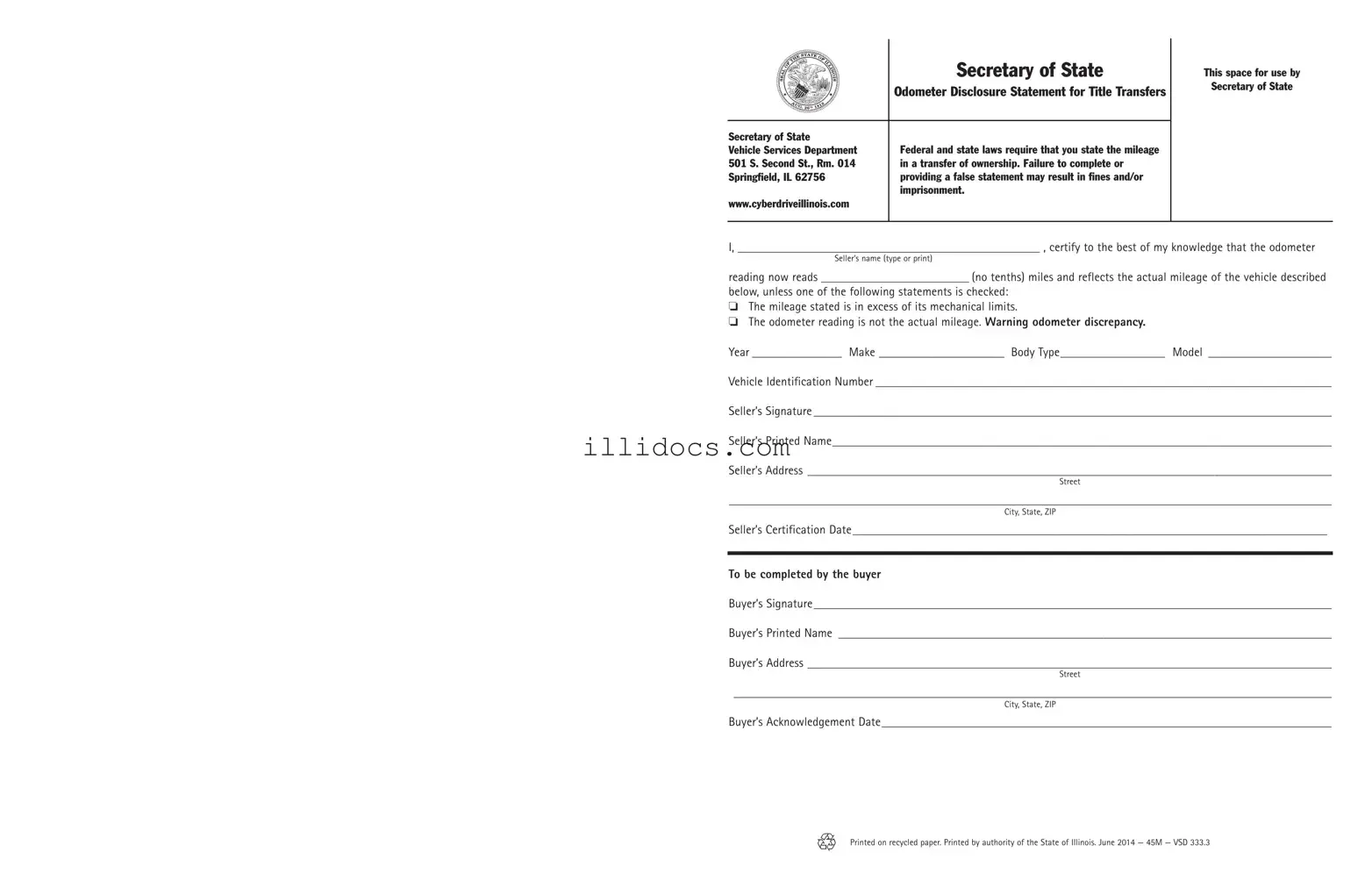What is the purpose of the Odometer Statement for Illinois?
The Odometer Statement for Illinois serves as a legal declaration of the vehicle's mileage at the time of ownership transfer. This form is essential for both buyers and sellers, as it ensures transparency regarding the vehicle's condition. By completing this statement, sellers confirm the accuracy of the odometer reading, which helps prevent fraud and protects buyers from unknowingly purchasing vehicles with altered odometer readings.
What happens if I provide false information on the Odometer Statement?
Providing false information on the Odometer Statement can have serious consequences. Under both federal and state laws, submitting inaccurate mileage can lead to penalties, including fines and even imprisonment. It is crucial to be truthful when filling out this form, as it not only affects the legal transfer of ownership but also impacts the trust between the buyer and seller.
Who is responsible for completing the Odometer Statement?
The seller is primarily responsible for completing the Odometer Statement. They must provide their name, the current mileage of the vehicle, and certify that the information is accurate to the best of their knowledge. However, the buyer also has a role in this process by signing the form to acknowledge the mileage provided. Both parties must ensure that the form is filled out correctly to avoid any legal issues later on.
Where can I obtain the Odometer Statement for Illinois?
The Odometer Statement for Illinois can be obtained from the Secretary of State's website or local vehicle services offices. It is advisable to use the most current version of the form to ensure compliance with state regulations. The form is typically available for download online, making it convenient for both buyers and sellers to access and complete prior to a vehicle transfer.
